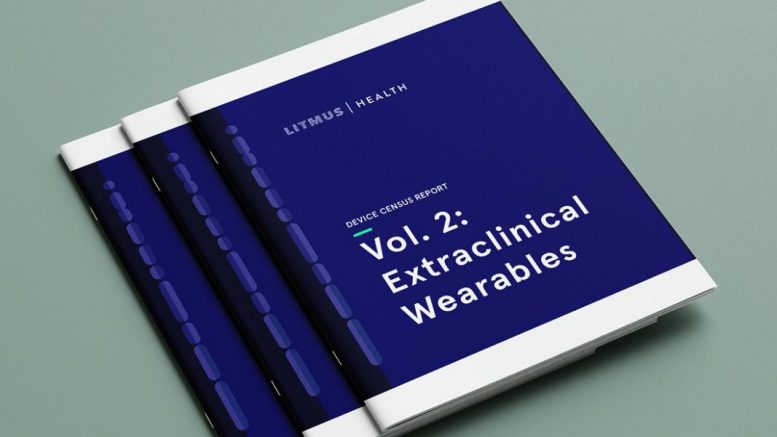New report from Litmus Health provides guidance on the best devices for clinical study and trial applications
Litmus Health, the research-ready infrastructure platform for real world data, today announced the publication of the second volume of the company’s Device Census Report. The report provides a detailed look into the wearable device landscape, providing analysis of 40 top devices’ sensors and metrics, data capture and transparency, as well as overall suitability for clinical research and patient care. The Litmus Health Device Census Report is the only comprehensive report that examines the wearables landscape through the lens of clinical research available.
Volume Two has updated inclusion criteria to reflect the pharmaceutical industry’s adoption of real world data. Surveying over 40 devices and representing 26 individual brands, the new report recommends the top 12 devices for clinical trial applications.
To appropriately analyze data collected outside of a clinical setting, researchers need access to minimally transformed data and extensive documentation behind each device maker’s data transformations. The Device Census Report from Litmus gives the industry an at-a-glance reference, allowing pharmaceutical companies and contract research organizations to quickly determine the best device for their specific applications and requirements.
“Now more than ever, access to minimally transformed, real world data is becoming a necessity in the pharmaceutical world,” said Dr. Samuel Volchenboum, co-founder and Chief Medical Officer of Litmus. “Through our own work at Litmus, we have seen the industry’s growing adoption of real world data — as well as pharma’s frustration at opaque data standards from these device makers. As we continue to encourage the industry to adopt consistent data standards, our report has become a go-to resource for researchers and clinicians. We hope it continues to enable them to effectively incorporate real world data into their trials.”
The latest volume of the report continues to provide a Transparency Score for each device maker — a measure of each device makers’ commitment to data transparency. Litmus has determined device maker Transparency Scores by evaluating how much information is publicly available to researchers, such as evidence of data transformation, developer documentation, and availability of a more in-depth application programming interface (API) or software development kit (SDK) to use for clinical purposes. The report also takes into consideration whether a device maker has an active developer base with adequate technical support for researchers.
As Litmus’ experts have advised customers over the past several years, any choice of wearable requires a careful assessment of study needs and insights into the compromises that may be made with the choice of any device. The report encourages researchers and clinicians to select a device that best serves their research goals and analysis plan.
Inclusion criteria for devices in the second volume include:
- Wrist or hand-worn, as opposed to patches, ingestible, or environmental sensors
- Intended to capture continuous or near-continuous data, as opposed to form factors only suited to workouts or, for example, sensors that default to sleep mode except during workouts
- Primarily intended to capture data about a human, rather than its environment
- Intended to capture data beyond a clinical setting; i.e., in a real-world setting
- Designed to capture heart rate data at a minimum
- Focused on real-world data, including Average Daily Living and Physical Activity Intensity
- Dedicated to applications of the device within the pharma and research industries, as opposed to purely concentrated on consumer fitness applications
Device makers represented in the report include:
- Actigraph
- Apple
- Fitbit
- Garmin
- Oura
- POLAR
- Samsung
- WHOOP
To learn more about Litmus, as well as download a copy of the Device Census Report, Volume Two, please visit www.litmushealth.com

